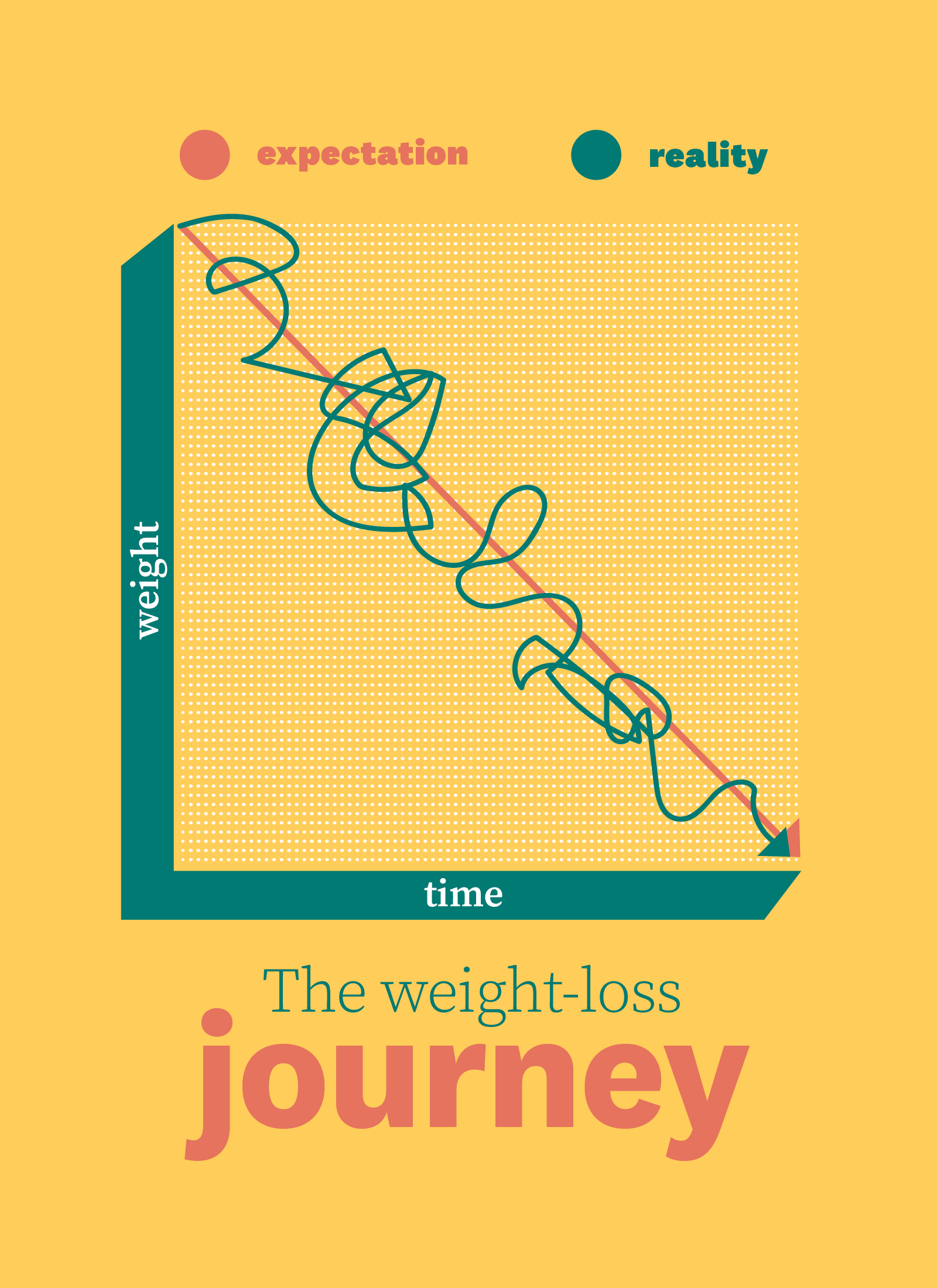How Successful People Reach Their Goals


Let's think about your personal goals for a sec. Where do you want to be in six months or a year? Maybe you want to lose 20 or 50 pounds, run a 10K, or cook dinner more often than ordering takeout. These are "outcome goals"—results or milestones we want to hit down the road. Outcome goals give us direction and are a great motivator, but how do we actually make them happen?
Setting mini goals
It’s a whole lot easier to reach your ultimate, fist-pumpable goal if you break it down into smaller, more reachable ones. You’re more likely to reach any goal if you make it…
Specific
Rather than:“I’ll eat healthier.”
Try: “I’ll pack a salad with chicken for lunch on Monday and Wednesday.”
Truly doable
Rather than:“I’ll start being active by running 5 miles on Monday and Wednesday.”
Try: “I’ll start by walking a mile each morning.”
Active
Rather than:“I want to stop eating sweets after dinner.”
Try: “I’ll start having a piece of fruit after dinner if I want something sweet.”
Relevant
Rather than:“I want to fit into my jeans from high school.”
Try: “I want to feel great in jeans.”
Choosing right-for-you goals
For starters, stick with one or two goals at a time. The more your attention is divided, the less chance you have of reaching your target. Give yourself time to accomplish (and maintain) your first couple of goals until they're a part of your routine—and then set new ones.
Putting it into action
To reach a long-term goal, you need a path made up of smaller, mini-goals, so you can chart your progress along the way. Your mini goal might be to swap your nightly ice cream for fresh fruit, or to jog two or three mornings a week, or to grocery shop every Sunday. These may feel minor but over time, they can ladder up to something big.
Change doesn’t happen by accident. It happens by setting goals and learning from the experience.
If your journey looks like this, you're probably doing something right! 
